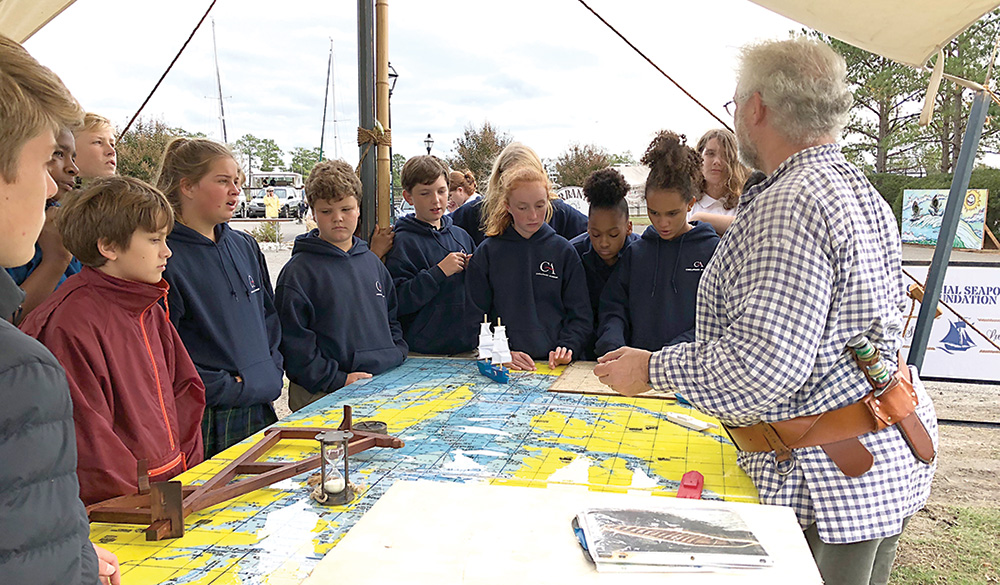
Chesapeake Academy (CA) seventh-grade students attended Oyster Festival Education Day in Urbanna on Thursday, October 31, before the Oyster Festival. Oyster Festival Education Day brings the expertise of local non-profit, government and private organizations to local students with a focus on watershed science and history. It is a cooperative effort of the Marine Science Legacy Program, Oyster Festival Waterfront Committee, and Oyster Festival Foundation.
CA develops a marine science thread throughout the curriculum that culminates in a comparative field study between the Florida Keys and the Chesapeake Bay. “Oyster Education Days is a great event for our students to test and expand their understanding of our local waterways,” explained science teacher Robin Blake.
CA students traveled to 10 stations learning about different aspects of the Chesapeake Bay’s keystone species. Chesapeake Bay Governor’s School seniors challenged CA students to study a variety of oysters to determine and describe changes among different oyster populations and try to find the reason for their observations. Using scientific tools such as rulers, chemicals, and microscopes, students studied a variety of oysters. After considering their observations, students determined bacteria in the water caused changes in oyster quality. Chesapeake Bay Governor’s School students outlined the ways various bacteria from waterways impact the health of oyster populations.
Christchurch School science students highlighted adaptations fish have made to feed and protect themselves. CA students considered the impact of these adaptations as they created their own fish with a variety of mouth types, fin types, and colors. Volunteers from the Friends of the Rappahannock challenged students to build filters that replicate the work of the oyster in the ecosystem. And Colonial Seaport discussed wheat, hemp, tobacco, and tea products that were grown in this region and taken to England across local waterways, making reference to Colonial resentments about taxation.
Students boarded three traditional oyster boats: “Edna Lockwood,” “Mildred Belle” and “Claud Somers.” “Our students were fascinated by the process of dredging oysters, and living on an oyster boat on the water,” explained Blake.
The Yorktown Waterman’s Museum presented how to tag gamefish and why it is important to report it to them if you catch a fish that has been tagged. Students then “fished” for fish, and had to decide if it was a legal keeper!
Archeologists from the Fairfield Foundation in Yorktown showed students how to clean artifacts found on the bottom of the Bay and discussed clues to the artifact’s origins. Blake reported, “This sort of inquiry excites students and really motivates some excellent thinking. Students learned new things, made some good connections with material they already knew, and enjoyed hands-on demonstrations that allowed them to experience all aspects of the oyster.”
Chesapeake Academy is an accredited, independent pre-kindergarten 3&4 through eighth grade school in Irvington.



